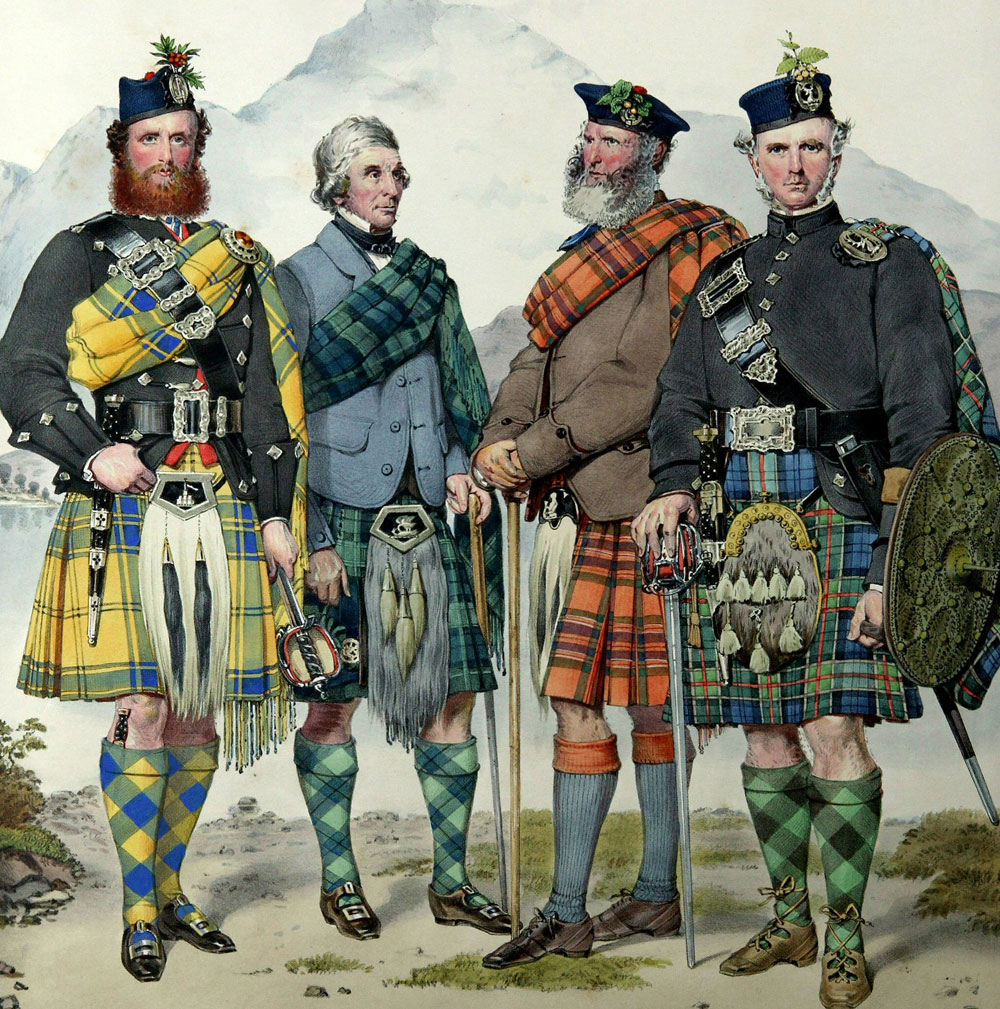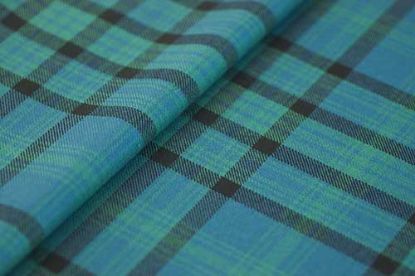Plotting a timeline for the philamhor transmutating into the philabeg (the little kilt) is a difficult task since it was not such a momentous happening that warranted any wealth of specific documentation. It’s a little like seeking the eureka moment when some bright innovator thought of cutting the legs off a pair of trousers and inventing the shorts!
Vague throwaway references can be found in literature of the 18th century mentioning the little kilt as the preferred form of ‘undress’ for the military who would wear it when in barracks — an eminently sensible habit when considering that the bulk of the traditional philamhor was totally unsuited to casual wear indoors. History tells us that those ‘little kilts’ were frequently the remains of cut-down well worn philamhors rather than specifically tailored garments.
However, there is one widely quoted explanation of the appearance of the little kilt that has been seized upon by many observers seeking to prick the bubble of overblown Scottish patriotism. It’s a fascinating report if taken at face value but the problem has arisen when the bubble-pricking observers have used it as a cudgel to denigrate and devalue other areas of quite legitimate Scottish pride in the country’s heritage
A perfect example is the late Hugh Trevor Roper’s posthumously published book in 2008 entitled The Invention of Scotland: Myth and History, a critique written in the mid-1970s of what Trevor-Roper regarded as the myths of Scottish nationalism. There were many grains of truth in Trevor-Roper’s work but his apparent need to live up to his reputation for “pitiless sarcasm and devastating mockery” overshadowed much of the work. His authentication of the fictitious Hitler Diaries in 1983 severely dented his academic credibility but the ‘kilt invented by an Englishman’ genie was well and truly out of the bottle.
What of that 18th century report? In the Edinburgh Magazine of 1785 there was a letter - written 17 years earlier - by an Ivan Baillie of Aberiachan - who claimed that the new form of kilt had been invented in 1725 by an English businessman Thomas Rawlinson who had established an ironworks at Invergarry near Fort William. Charcoal was part of the smelting process and Rawlinson observed how cumbersome and inconvenient the philamhor was for his tree-felling workmen - especially in wet weather - and decided to ‘abridge’ it. A local tailor separated the upper and lower portions and thus was ‘born’ the little kilt. Rawlinson’s business partner was Ian MacDonnell, the Glengarry Chief who was so taken with the innovation that he actively promoted it far and wide.
 |
MacIan print of Highlanders wearing kilts and plaids separately. |
On the surface there’s no reason to question this story although a cynic could query why a 1725 ‘invention’ wasn’t documented until 43 years later and then wasn’t published until 17 years after that. One could also view with some suspicion, Rawlinson’s Highlanders agreeing to having their valuable philamhors sliced in half, rendering them useless for conventional wear. Perhaps they were rich enough to have two!
Common sense and historical evidence tells us however that the small kilt was an uneventful and natural evolution of the philamhor in many parts of the Highlands and the Glengarry episode - as the only documented explanation to have been discovered - has assumed an importance far beyond its real significance.
























